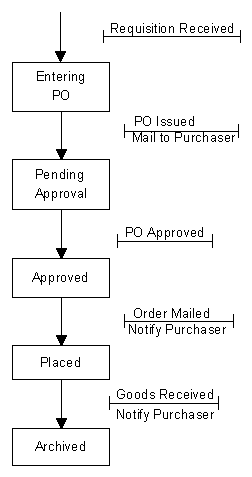| A dynamic model represents the behaviour of an object over time. It is used where the object's behaviour is best described as a set of states that occur in a defined sequence. The components of the dynamic model are: | |
| States. The purchase order (PO) is modeled as passing through a set of states. The operations that can be performed on the PO are dependent on the state it is in. For example, information cannot be entered after it has reached the approved state. | |
| State transitions. When purchase order data entry has been completed it transitions from the entering PO state to the pending approval state. State transitions are modeled as being instantaneous. | |
| Events. Events trigger state transitions. For example, the order mailed event triggers a state transition from the approved to the placed state. | |
| Actions. Actions occur on state transitions. For example, on a goods received event the action of notify purchaser is performed. Actions are modeled as instantaneous occurrences (contrast with activities). | |
| Activities. An activity is performed while an object is in a specific state. For example, while in the entering PO state data is entered into the PO. Activities are modeled as occurring over a period of time (contrast with actions). | |
